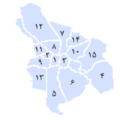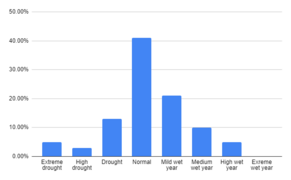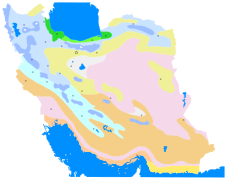|
Ecology in Isfahan
The ecological environment of Isfahan, Iran, reflects many interrelated factors, such as wildlife, climate, topography, irrigation, farming, and the human population. GeographyThe average altitude in the Isfahan city area is 1,607 m (5,272 ft) above sea level (compared to 1563 meters for the larger Isfahan province). Mount Soffeh is the highest point in the city at 2216 meters above sea level. The city of Isfahan covers an area of 550 square kilometers and is surrounded by an additional 136 square kilometers in suburbs. BiodiversityGavkhouni, an ancient marsh with highly saline water and uniquely adapted wildlife, is located in the eastern part of the city. The Isfahan Department of Environment was established in 1972 to conserve biodiversity.[1] Two national animal conservation parks are nearby: Kolah Ghazi Park in the southeast, and Ghamishloo park in the northwest. WaterSome 10 kilometers of canals and aqueducts crisscross the area. 14 water tunnels service Isfahan. Other water projects related to the city are the Yazd Water Transfer Pipeline, the Koohrang river tunnels, Kouhrang 2 Hydroelectric Power Station, Kouhrang 1 Dam, and Kouhrang 3 Dam.[2] The city relies on wells and the Zayanderud dam as its main sources of potable water. Drought Much of Isfahan's water management effort is devoted to combating drought. For example, the city has switched to xeriscaping lawns in a response to water scarcity.[3] By 2020, 52% of city green space (1820 hectares) was maintained with micro-irrigation, a low-pressure water system designed to minimize water use.[4] WasteIsfahan's population of 1,980,000 people creates almost 864 tons of waste daily, or 436 grams per citizen. The Isfahan compost fertilizer factory recycles 650 tons of waste each day and ranks first in the country.[5] Of the city's 5200 hectares of green space, 35% is irrigated using reclaimed wastewater. The city's main wastewater treatment plants are located in Sepahan Shahr (south) and Shahin Shahr (north). Air qualityIn 2013 Isfahan had only two days of clean air. 13 sensor stations measure its air quality.
Further reading
See alsoWikimedia Commons has media related to Nature of Isfahan. References
External links
|






